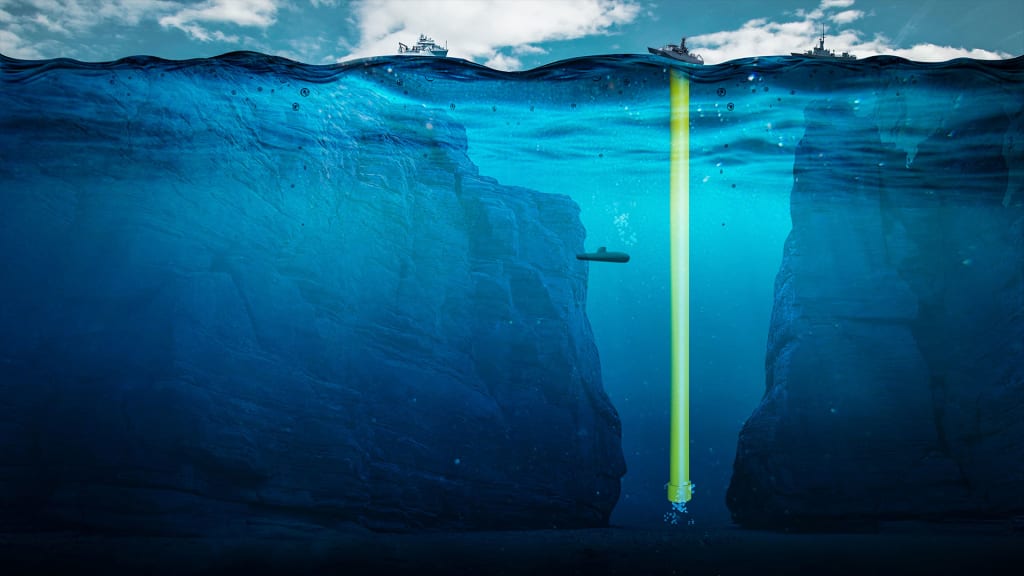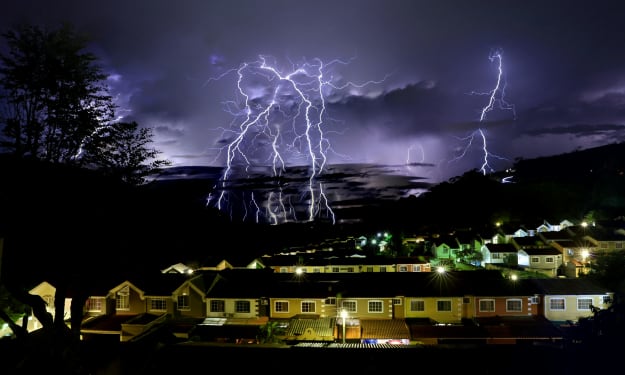Exploring the Depths of the Mariana Trench: The Deepest Point on Earth
An In-Depth Look at the Fascinating World Beneath the Ocean's Surface

The Mariana Trench is one of the most fascinating and mysterious places on Earth. Located in the western Pacific Ocean, the trench is the deepest part of the world's oceans and is home to some of the most unique and intriguing creatures on the planet. In this article, we will explore the Mariana Trench in more detail, taking a closer look at its history, geography, and the amazing creatures that call it home.
Geography and Formation of the Mariana Trench
The Mariana Trench is located in the western Pacific Ocean, to the east of the Philippines. It is approximately 2,550 kilometers (1,580 miles) long and 69 kilometers (43 miles) wide, and reaches a maximum depth of 10,994 meters (36,070 feet) at the Challenger Deep. The trench is a crescent-shaped depression in the Earth's crust and is the result of the collision between the Pacific and Philippine Sea plates.
The formation of the Mariana Trench began over 180 million years ago when the Pacific and Philippine Sea plates began moving towards each other. As the two plates collided, the heavier Pacific plate was forced underneath the lighter Philippine plate, a process known as subduction. The subduction process led to the formation of a deep oceanic trench, which was then further shaped by the movement of the Earth's tectonic plates.
Exploring the Mariana Trench
The Mariana Trench has been a subject of fascination for scientists and explorers for decades. In 1960, a team of scientists aboard the Trieste, a deep-sea submersible, made history by reaching the bottom of the trench for the first time. Since then, several other expeditions have been conducted to explore the depths of the Mariana Trench.
One of the biggest challenges of exploring the Mariana Trench is the extreme pressure at the bottom of the trench. At a depth of almost 11 kilometers (7 miles), the pressure is over 1,000 times greater than at the surface of the ocean. This means that only a handful of manned expeditions have been able to reach the bottom of the trench.
In recent years, unmanned submersibles have been used to explore the Mariana Trench. In 2012, filmmaker James Cameron made history by piloting the Deepsea Challenger, a submersible he designed himself, to the bottom of the trench. The Deepsea Challenger was equipped with cameras and other scientific instruments, allowing Cameron to collect data and images from the depths of the trench.
Unique and Fascinating Creatures
The Mariana Trench is home to a wide variety of unique and fascinating creatures, many of which have never been seen before. Because of the extreme pressure and darkness at the bottom of the trench, many of these creatures have adapted to their environment in ways that are completely different from those found on the surface.
One of the most famous creatures found in the Mariana Trench is the giant amphipod. These shrimp-like creatures can grow up to 34 centimeters (13 inches) long and have been found at depths of up to 10,600 meters (34,777 feet). Other creatures found in the trench include tube worms, sea cucumbers, and jellyfish, many of which are bioluminescent and able to produce their own light.
One of the most intriguing creatures found in the Mariana Trench is the Mariana snailfish. This fish, which was discovered in 2014, is the deepest living fish ever recorded, with specimens found at depths of up to 8,000 meters (26,247 feet). The Mariana snailfish has adapted to the extreme pressure and darkness of the trench by having a small body and a gelatinous structure, which allows it to move through the water with ease.
Another fascinating creature found in the Mariana Trench is the giant squid. While giant squids have been observed in other parts of the ocean, the ones found in the Mariana Trench are particularly unique due to their adaptations to the extreme depths. They have longer tentacles and larger eyes than those found in shallower waters, allowing them to better navigate the dark and pressure-filled environment.
Aside from the unique creatures found in the trench, the Mariana Trench also holds important scientific value. The extreme conditions found at the bottom of the trench provide a unique environment for studying the limits of life on Earth, as well as providing insight into the geological processes that shape our planet.
Conservation Efforts
Despite the Mariana Trench's importance, it is not immune to human impact. Plastic pollution, deep-sea mining, and climate change all pose threats to the delicate ecosystem of the trench. In recent years, there have been calls for increased conservation efforts to protect the Mariana Trench and its inhabitants.
One of the main conservation efforts currently being undertaken is the establishment of marine protected areas (MPAs) in the region. These MPAs would provide a sanctuary for the unique creatures and ecosystems found in the Mariana Trench, as well as help to mitigate the impacts of human activity in the surrounding waters.
Conclusion
The Mariana Trench is a fascinating and mysterious place, with unique creatures and geological processes that have captivated scientists and explorers for decades. While there is still much to learn about this deep-sea wonder, the information we have gathered so far has provided valuable insight into the limits of life on Earth and the importance of protecting our planet's delicate ecosystems. As we continue to explore the depths of the Mariana Trench, it is important that we also work to protect it and its inhabitants for future generations to enjoy and learn from.
About the Creator
Aadhi Penten
With a love for exploring the world and a passion for sharing my experiences through words, my articles is a window into my life and a source of inspiration for those seeking adventure. From travel tips to personal stories
Enjoyed the story? Support the Creator.
Subscribe for free to receive all their stories in your feed. You could also pledge your support or give them a one-off tip, letting them know you appreciate their work.






Comments
There are no comments for this story
Be the first to respond and start the conversation.